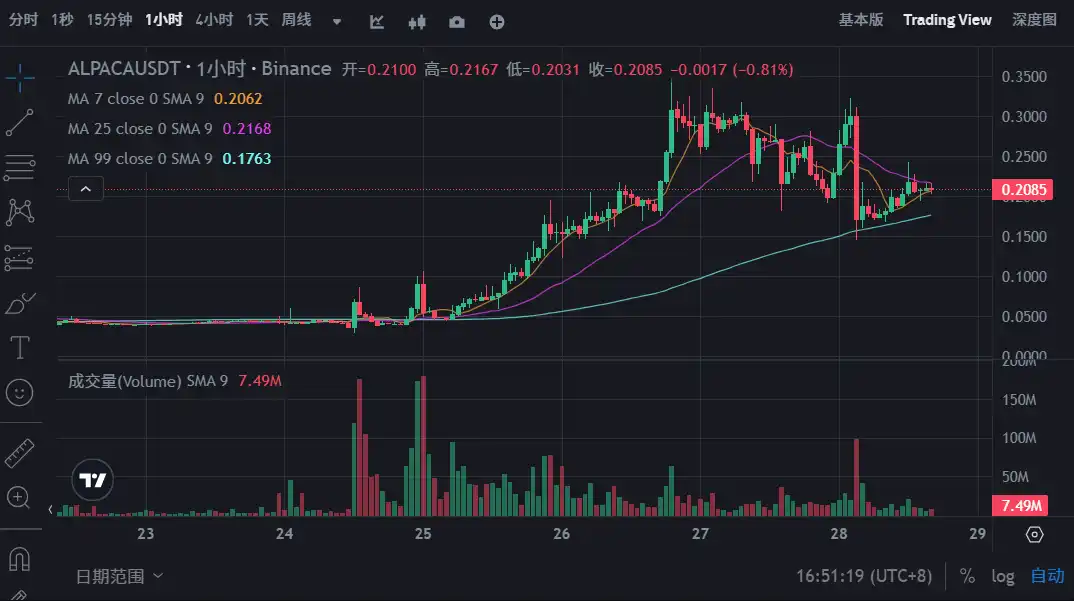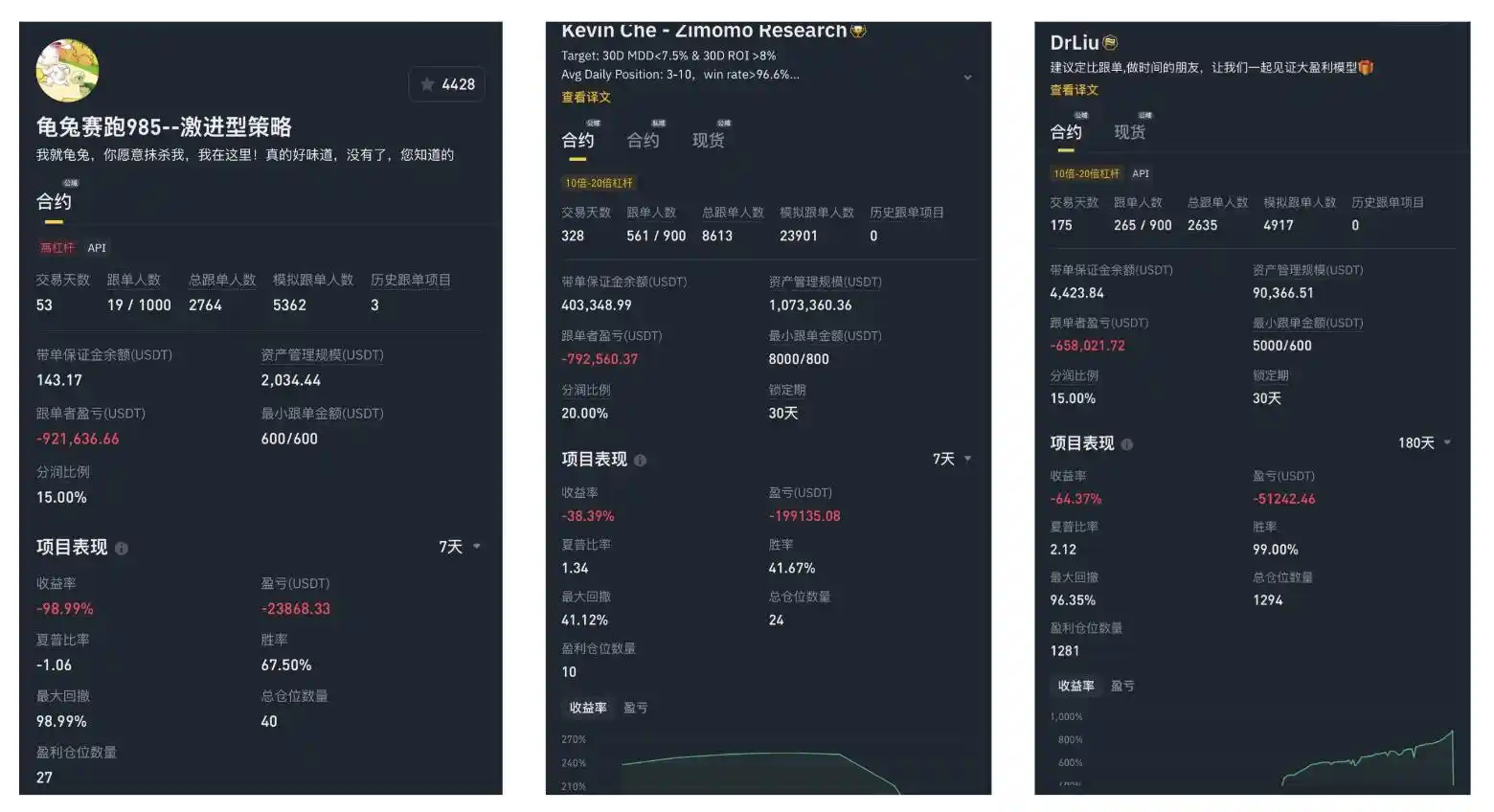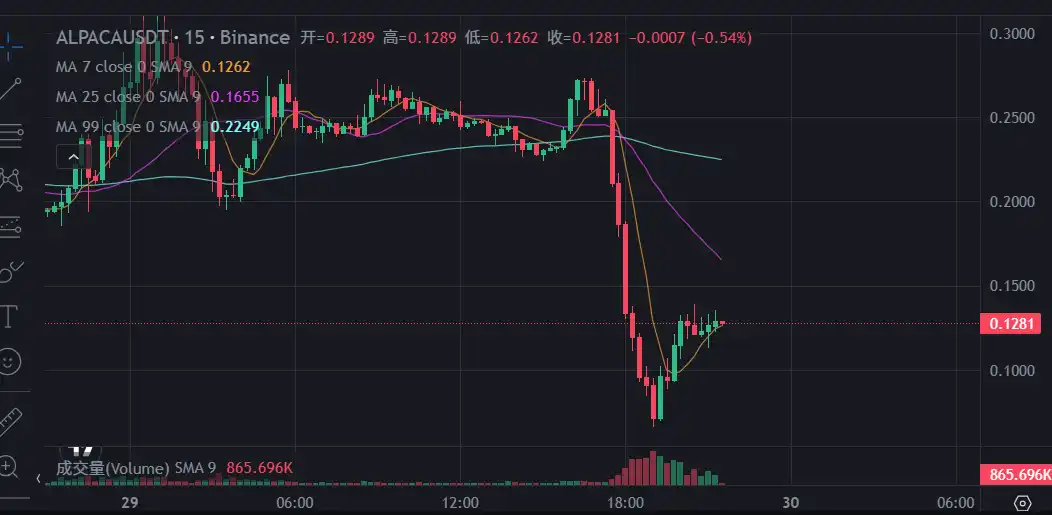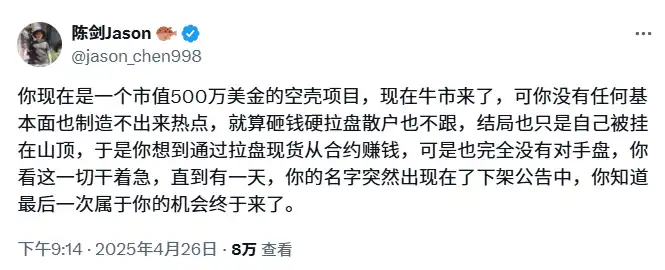Original Title: "Looking Back at Alpaca: When Bad News Becomes a Brief Wealth Code"
Original Source: Deep Tide TechFlow
In recent days, the soon-to-be delisted "Alpaca Coin" $ALPACA has been active at the center of the market, stirring up over $10 billion in total trading volume with a circulating market cap of $30 million. On April 24, Binance announced that it would delist four tokens, including Alpaca Finance ($ALPACA), on May 2.
The news of "delisting from Binance" is usually a significant negative for projects—delisting means reduced liquidity, shrinking trading volume, and token prices often plummet or even become stagnant.
However, after the delisting news was released, $ALPACA experienced a drop of about 30% in a short time (based on Binance spot trading) but then saw its price skyrocket nearly 12 times within three days, soaring from $0.029 to a peak of $0.3477. Meanwhile, the open interest (OI) for $ALPACA far exceeded its token market cap by several times, and the long-short battle surrounding $ALPACA began to resemble a "meat grinder" market.

Accelerated Fee Settlement, Intensified Long-Short Battle
Subsequently, Binance adjusted the funding rate rules, shortening the cap rate cycle to settle once every hour (up to 2%), further intensifying the fierce nature of the long-short battle. Long positions not only profited from price increases but could also continuously "eat" high funding rates, with longs "taking and eating" over several days, as the price of $ALPACA continued to engage in high-level trading for nearly four days.
With an hourly settlement of -2% in fees, under the premise of 1x leverage, a short seller holding a short position for one day would incur at least a 48% loss of their principal. Yet, even with such high rates, there were still funds rushing in to short.
In the midst of this fierce battle, some noticed that certain traders with million-dollar positions were consistently shorting $ALPACA at high leverage, ultimately leading to a liquidation of millions of dollars in funds from their followers.

On April 29, Binance raised the contract fee cap for $ALPACA to ±4%. For short sellers, this increase in the fee cap would double the cost of shorting, but instead of deterring shorts, the price of $ALPACA unexpectedly plummeted, dropping from $0.27 to around $0.067.

No Absolute Trading Rules
As trading volume and attention gradually shifted, the story of $ALPACA may have reached a conclusion.
Looking back at this billion-dollar farce, in some ways, the recent events surrounding $ALPACA were akin to a meme—drawing significant attention from the negative delisting news, allowing the principle of "black or red is still red" to be fully realized in price fluctuations. At the same time, within a similar environment (top-tier trading platforms), the relatively low circulating market cap (at its lowest, less than $4 million), highly controlled chips, and the wide price fluctuations that continuously stimulated players' nerves even linked the image of "alpaca" to the meme culture.
However, while the image may be cute, for those truly participating in the battle, these days could only be described as "bloody." There were instances of frantic price surges due to bad news, and the "explosion of shorts" led to smooth declines. The complex price movements of $ALPACA over these days overturned the usual "sell the news" logic and disrupted many people's positions.
Clearly, the boundaries between "good news" and "bad news" have gradually blurred, and the previously singular judgment logic is no longer applicable to the ever-evolving market. Instead, the manipulation of human psychology has become rampant, with continuously refreshed liquidation data gradually occupying the market's center. Describing this evolutionary direction as "barbaric growth" may be quite fitting.
However, things have dual aspects; while some feel confused, others feel excited. This farce is not necessarily a bad thing for everyone. For many participants seeking the thrill of price fluctuations and possessing exceptional skills, the way alpaca has moved could even represent a long-awaited opportunity to make significant profits.
There are also voices suggesting that the traders using followers' funds to short without regard for costs are part of a hunt for retail investors' capital, akin to the saying from a movie: "The gentry's money is returned in full, while the common people's money is split three to seven." The truth of these claims is hard to determine at the moment, but it is certain that even if the reality is not so dark, the ultimate winners in this manipulation will not be ordinary users.
In the absence of adequate regulatory measures, $ALPACA may not be the last instance of wild manipulation in this market. As of the time of writing, the price of $ALPACA is still experiencing significant volatility, and there may be more exciting "performances" before the official delisting.
In the tumultuous price battle, it is difficult for naive participants to find a safe haven. Under the hunt for attention and liquidity, perhaps the best strategy for retail investors is to watch less and act more. Those who see big news and abnormal price movements and think "opportunity has come" are not just retail investors, but also the long-awaited project parties.

免责声明:本文章仅代表作者个人观点,不代表本平台的立场和观点。本文章仅供信息分享,不构成对任何人的任何投资建议。用户与作者之间的任何争议,与本平台无关。如网页中刊载的文章或图片涉及侵权,请提供相关的权利证明和身份证明发送邮件到support@aicoin.com,本平台相关工作人员将会进行核查。




